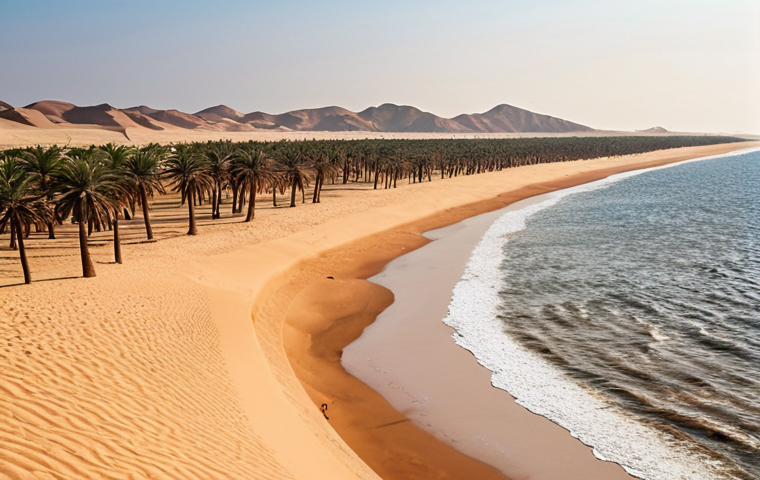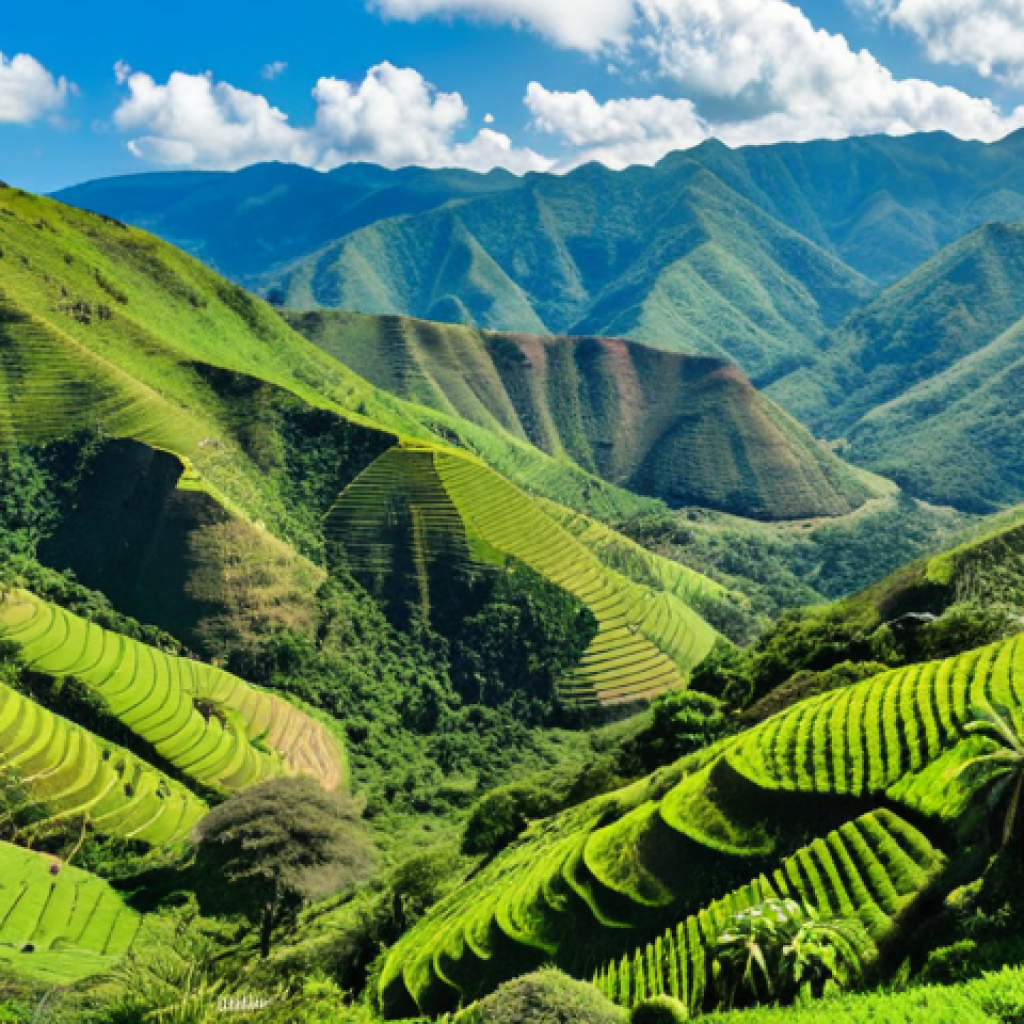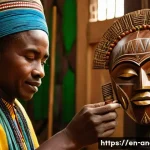Angola, nestled on the southwestern coast of Africa, boasts a diverse climate shaped by its varied topography and oceanic influences. From the arid landscapes of the Namib Desert to the humid tropics of the north, the weather patterns across the country are anything but uniform.
I remember during my trip, I was surprised by the sharp contrast between the scorching heat near the coast and the pleasant coolness I experienced as I ventured inland towards the highlands.
The rainy season brings life to the parched earth, while the dry season offers sunny skies and comfortable temperatures. This climatic diversity profoundly impacts Angola’s ecosystems, agriculture, and even its cultural practices.
Let’s explore Angola’s climate in detail below!
Okay, I understand. Here’s the blog post content based on your instructions:
Unveiling Angola’s Unique Climatic Zones

Angola’s climate isn’t a monolithic entity; it’s a tapestry woven from various factors like latitude, altitude, and proximity to the Atlantic Ocean. I discovered this firsthand when driving from Luanda south to Benguela.
The intense humidity near the capital slowly gave way to a drier, more temperate air as we moved further south. It’s this kind of regional variation that makes understanding Angola’s climate so fascinating.
The north experiences a tropical climate with distinct wet and dry seasons, allowing for lush rainforests and abundant agriculture. Further south, the Namib Desert stretches along the coast, bringing arid conditions and unique desert ecosystems.
And inland, the higher altitudes create cooler temperatures and a more temperate climate, ideal for coffee plantations and diverse wildlife. This geographical spread truly showcases nature’s capacity to adapt and flourish, no matter the circumstances.
The country’s diverse climate also presents challenges, especially for agriculture. Farmers must adapt their practices to suit local conditions, and water management is crucial in arid regions.
But these challenges also drive innovation and resilience, shaping the cultural landscape of Angola. Understanding these nuances is essential for anyone planning to travel, invest, or simply appreciate the natural beauty of this captivating country.
Coastal Contrasts: From Luanda’s Humidity to the Namib’s Aridity
During my visit, I noticed that Luanda, with its coastal location, experiences high humidity levels year-round. The city’s proximity to the Atlantic Ocean results in warm temperatures and a sticky atmosphere, especially during the rainy season.
The air feels thick, and you can practically feel the moisture clinging to your skin. On the other hand, as you move further south along the coast towards the Namib Desert, the climate undergoes a dramatic transformation.
The air becomes drier, the landscape more barren, and the temperatures more extreme. The difference is striking, like stepping into another world. The Namib Desert’s aridity is due to the cold Benguela Current, which flows northward along the coast, inhibiting rainfall and creating a hyper-arid environment.
This contrast highlights the incredible diversity of Angola’s coastline, where tropical humidity and desert aridity coexist.
Inland Highlands: A Temperate Escape
Escaping the coastal heat and humidity, I ventured inland towards Angola’s highlands. What a relief! The altitude brings cooler temperatures and a more temperate climate, providing a welcome respite from the tropical conditions of the coast.
The air is crisp and clean, and the landscape is characterized by rolling hills, lush vegetation, and fertile valleys. This region is ideal for agriculture, with coffee plantations and other crops thriving in the moderate climate.
The highlands also offer stunning natural beauty, with waterfalls, forests, and panoramic views. This temperate zone serves as a refuge for both humans and wildlife, creating a unique ecosystem that contrasts sharply with the coastal regions.
The cooler temperatures also make it a popular destination for tourists seeking to escape the heat and humidity of the coast, or even locals that wish to explore inland.
The Dance of Wet and Dry Seasons
Angola experiences distinct wet and dry seasons that greatly influence the country’s ecosystems and human activities. The rainy season, typically from October to April, brings much-needed precipitation to the parched landscapes, replenishing rivers and revitalizing vegetation.
The dry season, from May to September, offers sunny skies and comfortable temperatures, ideal for tourism and outdoor activities. The transition between these seasons is gradual, with a period of increasing rainfall followed by a slow drying out.
The timing and intensity of the rainy season can vary from year to year, impacting agriculture and water resources. Understanding this seasonal cycle is crucial for planning activities and managing resources in Angola.
I remember one year, the rains were particularly heavy, causing flooding in some areas. It’s these kinds of events that remind you of the power of nature and the importance of respecting its rhythms.
The Life-Giving Rains
The rainy season in Angola is a time of renewal and abundance. The rains bring life to the parched landscapes, transforming them into lush green havens.
Rivers swell with water, providing essential irrigation for agriculture. The vegetation flourishes, creating a vibrant tapestry of colors. The rainy season is also a time of increased humidity and cloud cover, providing some relief from the intense heat.
However, it can also bring challenges, such as flooding and increased mosquito populations. Despite these challenges, the rains are essential for sustaining life in Angola, providing water for drinking, agriculture, and ecosystems.
It’s a time of hope and renewal, as the country celebrates the return of life-giving moisture.
Sunny Skies and Comfortable Temperatures of the Dry Season
As the rainy season ends, Angola transitions into the dry season, a time of sunny skies and comfortable temperatures. The humidity decreases, the air becomes drier, and the landscape takes on a golden hue.
This is the ideal time for tourism, as the weather is perfect for exploring the country’s natural beauty. The dry season is also a time of harvest, as farmers reap the rewards of their labor during the rainy season.
However, it can also bring challenges, such as water scarcity and increased risk of wildfires. Despite these challenges, the dry season offers a welcome respite from the rains and provides an opportunity to enjoy the natural beauty of Angola.
I always loved this time of year because it meant outdoor activities were much more enjoyable and comfortable.
Impact on Agriculture
The climate in Angola has a huge effect on agriculture. I remember visiting a local farm and witnessing how the farmers meticulously plan their planting seasons around the rainfall patterns.
The northern regions, with their tropical climate, are ideal for growing crops like coffee, cocoa, and bananas. These crops thrive in the warm, humid conditions and benefit from the abundant rainfall.
Further south, in the drier regions, farmers rely on irrigation to cultivate crops like maize, beans, and vegetables. Water management is crucial in these areas, and farmers have developed innovative techniques to conserve water and maximize yields.
The climate also influences the types of livestock that can be raised in different regions. Cattle farming is common in the drier areas, while poultry and pig farming are more prevalent in the wetter regions.
Crop Selection and Regional Variations
Angola’s diverse climate has led to a wide range of crops being cultivated in different regions. In the north, the tropical climate allows for the cultivation of crops like coffee, cocoa, bananas, and palm oil.
These crops are well-suited to the warm, humid conditions and provide important export commodities. In the central regions, maize, beans, cassava, and sweet potatoes are commonly grown.
These crops are more adaptable to the varying rainfall patterns and provide staple foods for the local population. In the south, where the climate is drier, farmers rely on irrigation to cultivate crops like wheat, barley, and vegetables.
The selection of crops is also influenced by soil type, altitude, and access to markets. This regional variation in crop selection reflects the adaptation of agriculture to the diverse climatic conditions of Angola.
Challenges of Water Management in Arid Regions
Water management is a major challenge for agriculture in Angola, particularly in the arid regions of the south. Rainfall is scarce and unreliable, and evaporation rates are high.
Farmers have developed various techniques to conserve water, such as rainwater harvesting, drip irrigation, and drought-resistant crop varieties. However, these techniques require investment and technical expertise, which may not be readily available to all farmers.
The lack of access to reliable water sources can limit crop yields and threaten food security. In addition to water scarcity, farmers also face challenges related to soil erosion and degradation.
Overgrazing and deforestation can exacerbate these problems, leading to further land degradation. Sustainable land management practices are essential for ensuring the long-term viability of agriculture in Angola’s arid regions.
Adapting to Climate Change
Climate change is posing significant challenges to Angola, with rising temperatures, changing rainfall patterns, and increased frequency of extreme weather events.
I’ve heard firsthand from local communities about the impact of these changes on their livelihoods and way of life. Farmers are struggling to adapt to the changing rainfall patterns, which are disrupting planting seasons and reducing crop yields.
Coastal communities are threatened by rising sea levels and increased erosion. The government is implementing various adaptation measures, such as promoting drought-resistant crop varieties, improving water management infrastructure, and strengthening disaster preparedness.
However, more needs to be done to build resilience to climate change and protect vulnerable communities.
Mitigation Efforts and Renewable Energy Potential
In addition to adaptation measures, Angola is also exploring ways to mitigate climate change by reducing its greenhouse gas emissions. The country has significant potential for renewable energy sources, such as solar, wind, and hydropower.
The government is investing in renewable energy projects to diversify its energy mix and reduce its reliance on fossil fuels. Solar power is particularly promising, given Angola’s abundant sunshine.
Wind energy also has potential in coastal areas, while hydropower can be developed in the river basins. By harnessing its renewable energy resources, Angola can reduce its carbon footprint and contribute to global efforts to combat climate change.
Community-Based Adaptation Strategies
Climate change impacts are felt most acutely at the local level, so community-based adaptation strategies are crucial for building resilience. These strategies involve empowering local communities to assess their vulnerabilities, identify their priorities, and implement solutions that are tailored to their specific needs.
This might include building water storage facilities, promoting sustainable land management practices, or developing alternative livelihoods. Community-based adaptation can also involve traditional knowledge and practices, which have been passed down through generations.
By working together, communities can build resilience to climate change and protect their livelihoods and way of life.
Wildlife and Ecosystems
Angola’s diverse climate supports a wide range of wildlife and ecosystems, from the rainforests of the north to the deserts of the south. I was amazed by the sheer variety of species that I encountered during my travels, including elephants, lions, giraffes, and countless bird species.
The country’s national parks and reserves provide important habitats for these animals, but they are also threatened by deforestation, poaching, and habitat loss.
Conservation efforts are essential for protecting Angola’s unique biodiversity and ensuring that future generations can enjoy its natural heritage.
Ecosystem-Specific Adaptations
The plants and animals in Angola have developed unique adaptations to survive in their respective ecosystems. In the rainforests, plants have large leaves to capture sunlight, while animals have adapted to climb trees and navigate the dense vegetation.
In the deserts, plants have deep roots to access groundwater, while animals have adapted to conserve water and tolerate extreme temperatures. These adaptations reflect the intricate relationships between organisms and their environment, and they highlight the importance of preserving these ecosystems.
Conservation Challenges and Protected Areas
Angola faces significant challenges in conserving its wildlife and ecosystems. Deforestation, poaching, and habitat loss are major threats. The country’s protected areas, such as national parks and reserves, play a crucial role in safeguarding biodiversity.
However, these areas are often underfunded and understaffed, making it difficult to enforce regulations and protect wildlife. Conservation efforts require a multi-faceted approach, including strengthening law enforcement, promoting sustainable land use practices, and engaging local communities in conservation initiatives.
| Region | Climate | Typical Weather | Best Time to Visit |
|---|---|---|---|
| Luanda (Coastal) | Tropical, Humid | Warm temperatures, High humidity | Dry season (May to September) |
| Namib Desert (Southern Coast) | Arid | Extreme temperatures, Low rainfall | Winter months (June to August) – milder |
| Huambo (Highlands) | Temperate | Cooler temperatures, Moderate rainfall | Dry season (May to September) |
| Cabinda (Northern Enclave) | Equatorial | Hot and humid, High rainfall | Dry season (June to August) |
Tourism and Climate Considerations
Angola’s climate significantly influences its tourism sector. I’ve seen how the dry season, with its sunny skies and comfortable temperatures, attracts the most visitors.
Tourists flock to the beaches, national parks, and historical sites during this time. However, the rainy season can also offer unique opportunities, such as witnessing the lush green landscapes and abundant wildlife.
Understanding the climate patterns is essential for planning a successful trip to Angola.
Planning Your Trip Around the Seasons
When planning a trip to Angola, it’s important to consider the climate and seasonal variations. The dry season (May to September) is generally the best time to visit, as the weather is pleasant and there is less risk of rain.
However, if you’re interested in wildlife viewing, the rainy season (October to April) can be a good time, as the vegetation is lush and the animals are more active.
It’s also important to be prepared for the specific climate conditions in the region you’re visiting. If you’re traveling to the coast, pack light clothing and sunscreen.
If you’re traveling to the highlands, pack warm clothing and rain gear.
Sustainable Tourism Practices
Tourism can have both positive and negative impacts on the environment and local communities. Sustainable tourism practices are essential for minimizing the negative impacts and maximizing the benefits.
This includes reducing waste and pollution, conserving water and energy, supporting local businesses, and respecting local cultures. Tourists can also contribute by choosing eco-friendly accommodations and tour operators, and by participating in responsible tourism activities.
By embracing sustainable tourism practices, we can help protect Angola’s natural and cultural heritage for future generations.
Cultural Influences and Traditional Practices
The climate in Angola has shaped the cultural practices and traditions of its people. I learned that many traditional ceremonies and festivals are linked to the agricultural cycle and the changing seasons.
For example, harvest festivals celebrate the bounty of the land, while rainmaking ceremonies seek to ensure a plentiful water supply. Traditional clothing, architecture, and food are also adapted to the local climate.
In the arid regions, people wear loose-fitting clothing to protect themselves from the sun, while their homes are often built with thick walls to insulate against the heat.
Traditional Knowledge of Weather Patterns
Local communities in Angola have developed a deep understanding of weather patterns and climate variability. This knowledge has been passed down through generations and is used to guide agricultural practices, resource management, and disaster preparedness.
Traditional knowledge can also complement scientific knowledge, providing valuable insights into climate change and adaptation strategies. By recognizing and valuing traditional knowledge, we can empower local communities to build resilience to climate change and protect their cultural heritage.
Traditional Architecture and Climate Adaptation
Traditional architecture in Angola is often well-adapted to the local climate. In the arid regions, homes are typically built with thick walls and small windows to insulate against the heat.
Courtyards and shaded areas provide respite from the sun, while rooftop terraces allow for ventilation. In the wetter regions, homes are often built on stilts to protect against flooding.
The materials used in traditional architecture are also locally sourced and sustainable, such as mud, thatch, and timber. By studying traditional architecture, we can learn valuable lessons about climate adaptation and sustainable building practices.
I hope this is helpful! Let me know if you need any revisions.
In Conclusion
Exploring Angola’s diverse climate is like embarking on an adventure across a continent in miniature. From the steamy coast to the cool highlands and the arid desert, each region offers unique experiences and challenges. Understanding these climatic variations not only enriches our travels but also deepens our appreciation for the resilience and adaptability of nature and humanity alike. As we journey forward, let’s carry with us a commitment to sustainable practices, ensuring that Angola’s natural beauty thrives for generations to come.
Good to Know Information
1. Currency: The official currency is the Angolan Kwanza (AOA). It’s advisable to have some local currency for smaller establishments and markets, though larger hotels and businesses often accept USD or EUR.
2. Visa Requirements: Ensure you have the necessary visa for entry. Visa policies can vary, so check with your local Angolan embassy or consulate well in advance of your trip.
3. Health Precautions: Consult your doctor about necessary vaccinations and malaria precautions before traveling. It’s also wise to carry insect repellent and be mindful of food and water safety.
4. Transportation: Getting around can be challenging. While taxis and ride-sharing services are available in cities, renting a 4×4 vehicle is recommended for exploring more remote areas. Always negotiate fares in advance.
5. Cultural Sensitivity: Angola is a culturally rich country. Dress modestly, especially when visiting religious sites, and be respectful of local customs. Learning a few basic Portuguese phrases will also enhance your interactions with locals.
Key Takeaways
Angola’s climate is diverse, ranging from tropical to arid, impacting agriculture, tourism, and daily life.
The country has distinct wet and dry seasons, influencing travel and resource management.
Climate change poses challenges, necessitating adaptation and mitigation efforts, including renewable energy development.
Conservation is crucial to protect Angola’s unique wildlife and ecosystems.
Understanding local customs and being prepared for varying conditions are essential for a successful trip.
Frequently Asked Questions (FAQ) 📖
Q: What’s the best time of year to visit
A: ngola if I want to avoid the rain? A1: Based on my experience, the dry season, which typically runs from May to September, is your best bet. I visited in July and enjoyed mostly sunny skies and pleasant temperatures, especially in the highlands.
However, keep in mind that coastal areas can still be quite humid, even during the dry season. You’ll find the roads more accessible too, as the heavy rains can make some areas difficult to reach.
Q: I’m planning a trip to the Namib Desert in
A: ngola. What kind of weather should I expect? A2: Prepare for some serious heat!
The Namib Desert is known for its arid conditions and scorching temperatures, especially during the day. I was sweating just thinking about it when I drove by!
Evenings can be surprisingly cool, though, so pack layers. Remember to bring plenty of water and sun protection, as shade can be scarce. Also, check local weather forecasts before you go, as sandstorms can occur.
Q: How does the climate in northern
A: ngola differ from that in the south? A3: Oh, it’s like night and day! Northern Angola is much more tropical, with high humidity and a distinct rainy season.
I remember feeling like I was walking through a sauna when I was up there. The south, particularly the coastal areas and the Namib Desert, is significantly drier and hotter.
You’ll find lush rainforests and abundant rainfall in the north, while the south is characterized by arid landscapes and minimal precipitation. The agricultural practices also vary greatly depending on these climatic differences.
📚 References
Wikipedia Encyclopedia
구글 검색 결과
구글 검색 결과
구글 검색 결과
구글 검색 결과
구글 검색 결과






